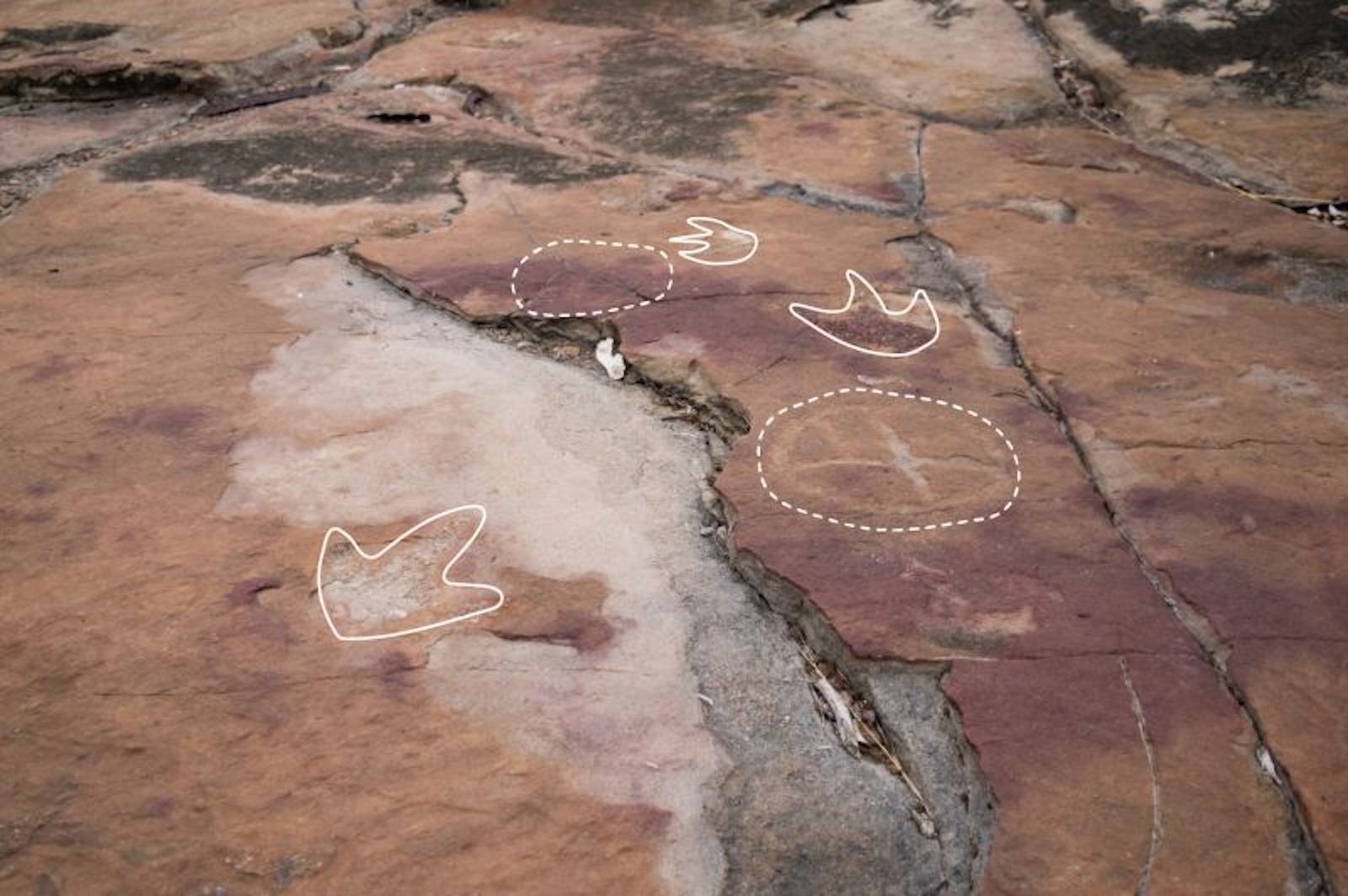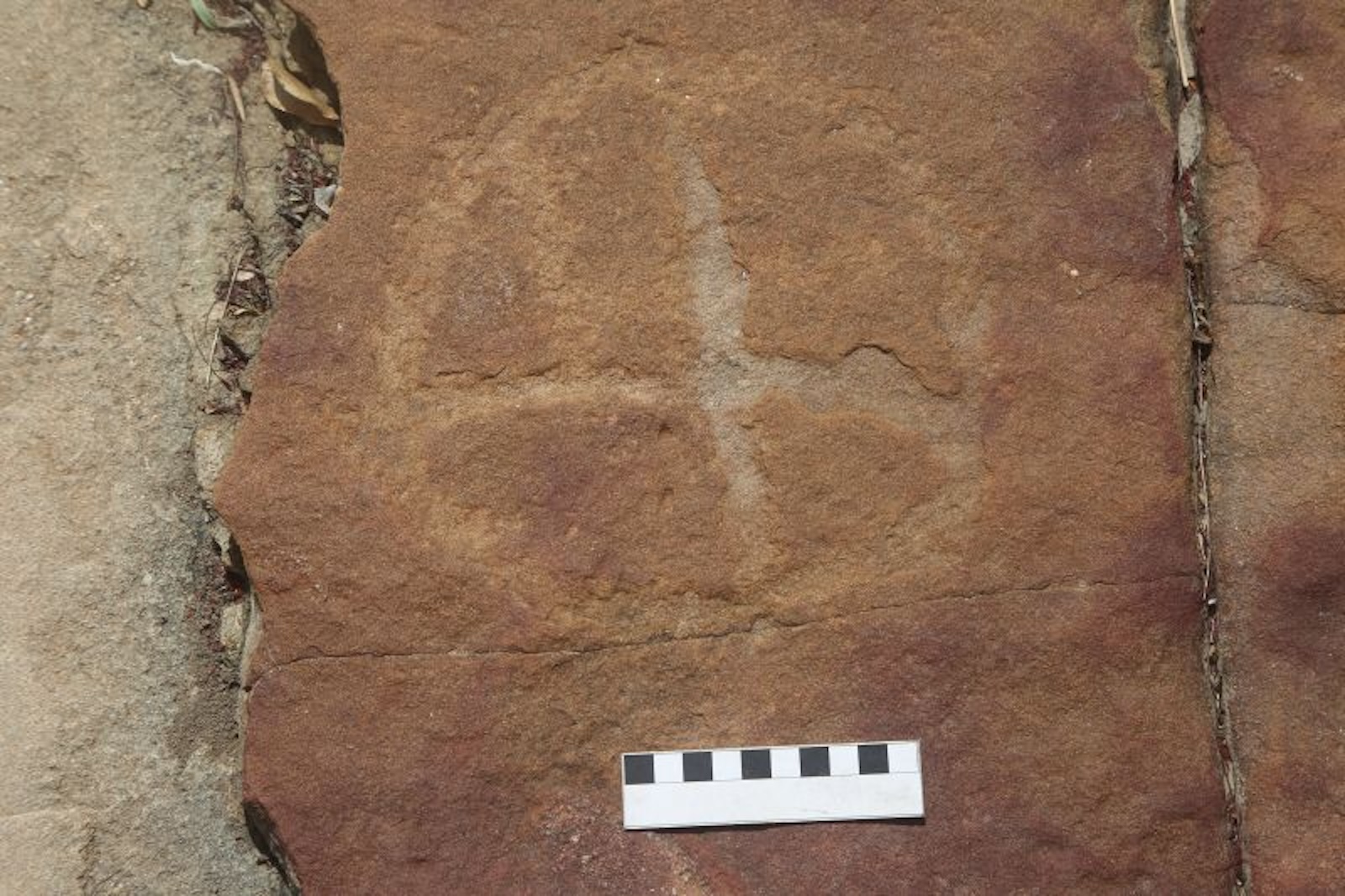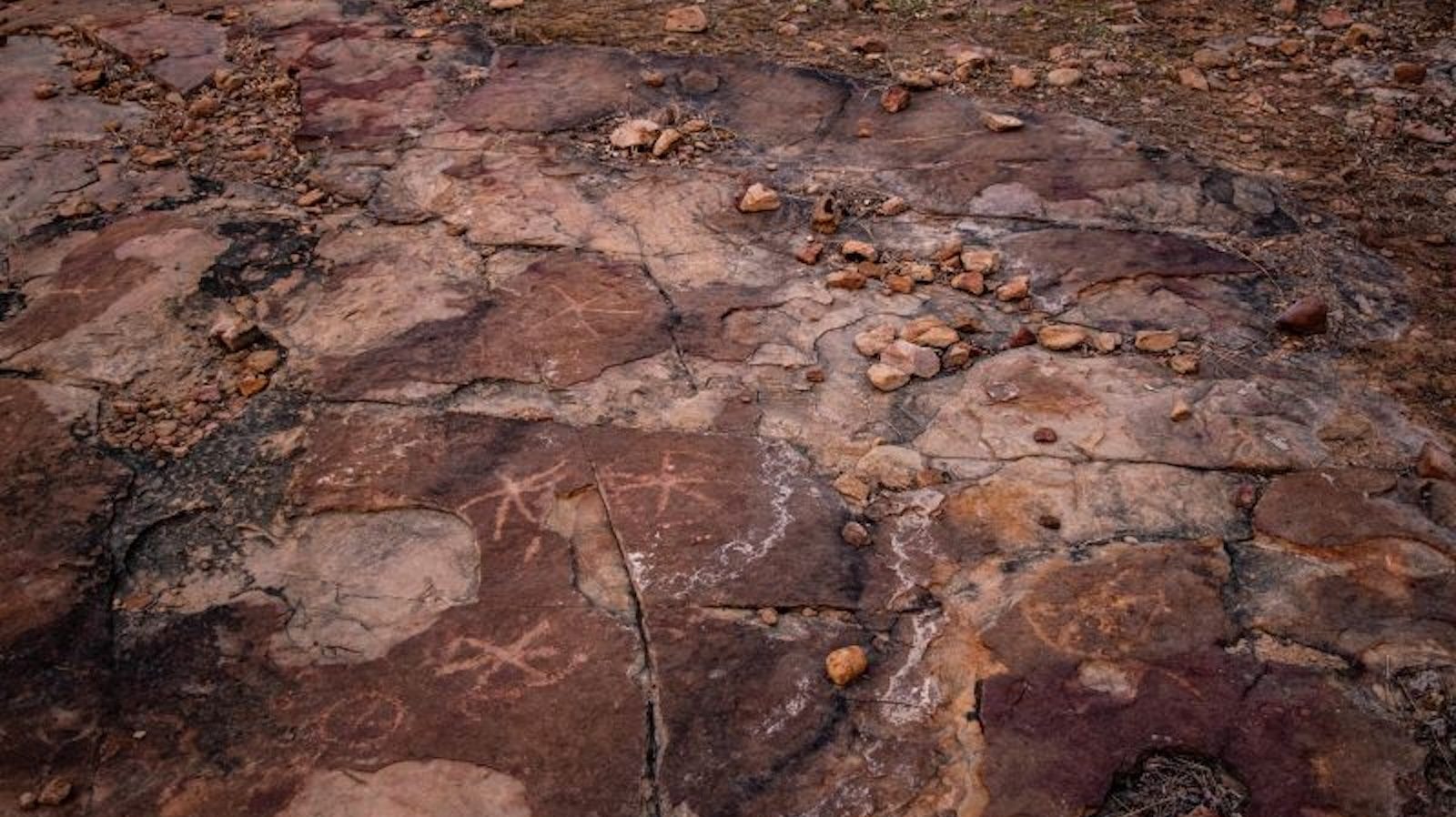(CNN) — Prehistoric humans in Brazil carved drawings into rock next to dinosaur footprints that may have been meaningful or interesting, a new study suggests.
The rock carvings, which archaeologists call petroglyphs, were found at Cerro do Letreiro in Paraiba, an agricultural state in Brazil's far east. Researchers first noticed the signs in 1975. But they are now understood to be associated with footprints following recent drone-assisted field surveys that revealed never-before-seen carvings. The footprints belong to dinosaurs from the Cretaceous period, which ended 66 million years ago.
“People often think that indigenous peoples are not aware of their environment or that they have no scientific mind or interest,” says Leonardo Troiano, an archaeologist and co-author of the study at the National Institute of Historical and Cultural Heritage. Brazil. “But that's not true. It's clear they were interested in the footprints. We don't know if they knew about dinosaurs, but it's clear they were interested in the footprints and thought they were significant in some way.”
The Cerode do Letrero petroglyphs are not the first examples of rock art found near dinosaur footprints, but the authors of the study believe that the unprecedented clarity of the connection between the two at this particular site could have significant implications for research. cultural heritage.

A dashed line represents petroglyphs made by indigenous people, while a solid line shows the footprints of theropod dinosaurs. (Credit: Leonardo Troiano)
Geometric shapes
It is unclear how long ago the petroglyphs were made. But the study — published in March in the journal Scientific reports– Radiocarbon dating has found burials in the area between 9,400 and 2,620 years ago, suggesting the tribe that left them must have lived during that time.
“These people probably lived in small communities, using the natural rock shelters that were most abundant in the area,” Troiano explains.
“This part of Brazil is like the outskirts of Australia: it's very hot and there's no shade, so it's not easy to carve rock from there. It takes a lot of effort, so when they chose this place, they were very. Deliberate,” he added. “They could have used many rocks in the surrounding area, but they chose this one.”
The style of the drawings varies, suggesting that multiple artists may have been involved. Some shapes are reminiscent of plants, while others resemble geometric shapes such as squares, rectangles, and circles. According to Troiano, the circles have crosses or lines that look like stars. However, the meaning of these marks remains a mystery.
“They all seem abstract, and if they represent anything to the people who created them, we don't know what it is,” he said.
The footprints at Cerro do Letrero belong to three types of dinosaurs: theropods, sauropods, and ornithopods. The researchers suspect that the rock carvers may have mistaken some of them for the footprints of rhesus, large native birds similar to ostriches, which are similar to the footprints of theropod dinosaurs.
It's hard to imagine what prehistoric people would have thought of the sauropod footprints left behind by the largest herbivorous dinosaurs that ever lived. Perhaps for this reason, the intentional connection between maps and these particular footprints is lacking, the study notes.
Dinosaur Rituals
Troiano said he believes the marks may have been left during communal meetings.
“I think the creation of rock art is steeped in some kind of ritual context: people get together to create something, maybe using some psychotropics. We have a plant called jurema, which is hallucinogenic and is still used today,” he explains. “We can infer that people used it in the past, because it is very common and common in the area. I think they were interested in what the footprints meant, and I think they recognized them. They realized that they were not random. ” .
According to Troiano, there are other sites with petroglyphs — in the United States and Poland — near the dinosaur footprints, but they don't show “the same level of intentionality anywhere,” he said. Intrinsicity is defined not only by the proximity of the graphs to the axes, but also by whether they overlap with them or not. If they don't overlap, that suggests a “reflection” of creators, the study suggests.
Troiano added that he is working on a follow-up article to explore the interpretation and analysis of the Cerrote do Letrero petroglyphs based on the results of the current study.
The direct correlation of the drawings with fossilized dinosaur footprints is unique and may shed more light on the significance, meaning and importance of rock art, says Radoslaw Palonga, associate professor of archeology at Jagiellonian University in Krakow, Poland. Petroglyphs but not involved in the study.
“That the locations of the rock art panels were specifically chosen is evidenced by, among other things, the fact that representatives of communities that created rock paintings or petroglyphs are often placed in close proximity to older images left by other cultures,” Balonga said in an email. “Rock art was practiced in many parts of the world, and it is most evident where my scientific interests are focused, among others, in the American Southwest/Southwestern United States.”

According to Troiano, this petroglyph is highly significant and visible at the site. The circle is divided internally by lines and is large. (Credit: Leonardo Troiano)
John Simek, distinguished professor of anthropology at the University of Tennessee, Knoxville, agrees. “This work provides an interesting new example of how ancient people observed and incorporated terrestrial fossils into their religious experiences and interpretations,” said Simek, who was not involved in the new petroglyph study.
“(Stanford University) historian of science Adrian Meyer has shown how the ancient Greeks and Romans saw fossils as evidence of giants and monsters from their own mythology, and how indigenous North American peoples saw their origin stories in fossils,” Simek said via email. “The case of Brazil is another archeological example of this human tendency to connect an imagined spiritual world with the inexplicable things in the world around us.”





